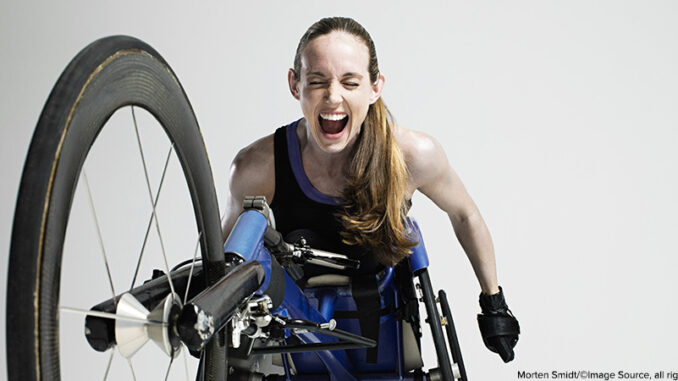
The 2016 Paralympic Games in Rio
The Paralympics ended in Rio de Janeiro last week and over 4,000 athletes from more than 160 nations competed to earn the honor and the glory of Olympic medals while overcoming some amazing challenges. The Paralympic Games are focused entirely on athletes with physical challenges that would make some of use never get off the couch at all.
There are 23 events at this year’s Paralympics, many of them the same as what you watched in Rio previously during the Olympic Games–but modified to accommodate the challenges and equipment required by paralympic athletes. At this year’s Games, China was the most successful nation, when it comes to the overall medal count. Chinese athletes won 239 total medals–almost double the amount claimed by Great Britain, which was second in the medal count. The United States paralympic athletes claimed 40 Gold medals, 44 Silver medals, and 31 Bronze medals for fourth place overall. As with other athletic competitions, as the athletes get stronger and their training gets better, records are falling at am impressive clip.
Dig Deeper Investigate the history of the Paralympic Games. When did it begin? Who are some of the most famous Paralympic athletes?
Muslim Teen Asks for Emoji with Head Scarf

More and more people use emoji every day to spice up their communications with symbolic faces and pictures. And while the list of emojis are growing all the time, some cultures are still looking to add their particular flavor to this digital communications with some new ideas. For example, a Muslim teenager in Germany is proposing that a new head-scarf clad emoji be developed and delivered in the next cell phone operating system update that the mobile carrier companies provide. The process that Rayouf Alhumedhi followed is an interesting one–which describes some of the more mysterious elements of the digital world.
Alhumedhi eventually sent her request for a new emoji to the Unicode Consortium–the group that oversees and approves the standards for keyboard symbols. This consortium (which means an association made up of several different companies that work together) will add this possible emoji addition to others that are under consideration. If the head scarf (or hijab) design get accepted within the consortium, it had earned candidate emoji status and could be included in the upcoming Unicode 10 round of fixes to be announced June 2017, and delivered to digital users later next year.
Why so long a wait? Each new addition to the Unicode must be reviewed and considered by the Consortium to make sure that it is not offensive or inaccurate. And when it comes to the hijab, there is always some criticism. There are many people in the world who believe that the requirement given to many Muslim women to cover their heads and hear with a head scarf is a means of oppression and a restriction of individuality. But the cultural meaning behind the hijab is a complex one. In her proposal to the Unicode Consortium, Alhumedhi, for example, talked about how–to her–the hijab gives her power to make people focus on her knowledge and personality rather than simply focus on her outward looks.
What Do You Think? Ask you classmates what they think about including a hijab emoji in an upcoming digital update. If anyone is against this, try to get them to explain their opinions on the issue. Make a graph that displays the amount of responses you received.
Would You Buy 3-D Printed Shoes?
Have you ever bought shoes online? Are you uncomfortable purchasing a pair of shoes without trying them on? Well, how about buying shoes that aren’t even MADE yet . . . but are promised to custom fit your feet alone? Image loading an app on your smart phone, taking a picture of you feet, and get a custom-designed pair of shoes built only to fit your feet and no one elses! That is the goal at a new, small company in San Diego, California called Feetz. Using computers and 3-D printing technology, the company receives orders and programs the dimensions into the printing software. Once the process begins, a new set of shoes is “printed” in about 12 hours.
Such custom work isn’t cheap. These shoes cost almost $200 a pair! But the owner of the 3-D printing company is hopeful that as the orders come in more quickly, costs will go down. Consider that Feetz doesn’t have a large workforce of employees and since each shoe is created and shipped away, there is no need for an expensive warehouse to hold shoes waiting for customers. So . . . if you can afford to show off your shoes in customized style, this might be the most unique birthday present ever!
